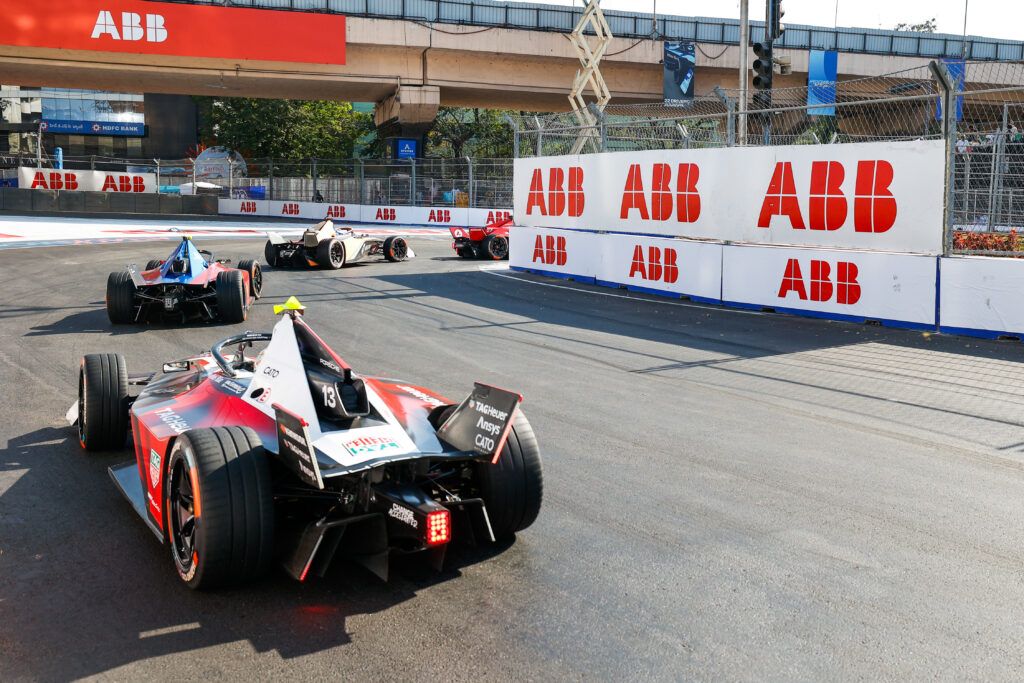How ABB Formula E is Moving the Needle in Electric Transportation
Motorsport races are exciting, and Formula E is no exception, but what sets Formula E apart from others is the positive change driven by the competition. With rising global CO2 levels leading to an increase in the earth’s temperature, Formula E is helping the world transition to electric vehicles. Stephanie Medeiros explains how the work that ABB Formula E does in promoting electric mobility and alternative energy solutions through the sport contributes to reducing air pollution and fighting climate change around the world.
The idea of Formula E originated in 2011 with the intention of creating a city-based electric car race to encourage the adoption of electric vehicles. The first racing season was in 2014-2015, with the first ever race in Beijing in 2014. Since its inaugural race in 2014, Formula E has not only grown immensely in viewership and gained the status of a FIA World championship, but has led the evolution of e-mobility technology through successive generations of Formula E races.
In 2014 battery technology for electric vehicles was highly limited compared to what we have today. The first generation of Formula E car, or Gen1, had a battery without the range to compete a full race, therefore drivers needed a pit stop halfway through the race to swap into another vehicle with a fully charged battery.
The next generation car, Gen2, was introduced in 2018 and benefitted from improved battery range, allowing drivers to complete an entire race with one vehicle, provided of course that they managed their energy well throughout the race.
The third generation car, Gen3, was introduced at the end of 2022 and highlights further improvements and efficiencies of electric cars such as the capability of regenerative braking (where the momentum of the car is used to charge the battery during a race) of up to 600kW. This means that up to 40% of the total energy used in a race can come from regenerative braking (Source). Efficiencies and improved energy management such as this make for lower energy consumption, allowing electric vehicles to have longer ranges and be more efficient overall.

Each generation of car has showcased the latest e-mobility technologies not yet available to the mass market, with ABB Formula E providing a real-world test bed for these technologies to further advance e-mobility. The newest e-mobility technologies, both on the vehicle and the charging infrastructure side, are tested and pushed to their limits on the racetrack before being brought to the mass market to benefit the public.
In terms of the cars themselves, participating vehicle manufacturers look to Formula E races to experiment with technologies such as energy management, thermal management, and battery design, with improvements eventually trickling down to their passenger vehicle models. It’s exciting to see what technology improvements the teams and vehicle manufacturers have already brought to their consumer market electric vehicles from the ABB Formula E racetrack, including improved efficiency of the drivetrains and the software design.
Jaguar is one example of a vehicle manufacturer that is seeing the benefits of Formula E racing, bringing learnings from the racetrack to their electric I-PACE SUV to improve the vehicle’s range by 8% with the same battery size (Source). In Formula E, such technology improvements can be implemented into real world vehicles from racetrack to road in as little as two to five years, which is incredibly fast when compared to other motorsports.
When it comes to the benefits to electric vehicle charging infrastructure, Formula E offers a uniquely challenging arena for electrical equipment development. Charging happens in a fast-paced environment, in different parts of the world and with changing energy sources, such as battery storage or different grids. The chargers in Formula E also need to be compact and mobile so they can be easily maneuvered in the teams’ garages, while also being tough enough to be transported all over the world.
The learnings taken from the sporting environment of Formula E are valuable data that electric vehicle charging manufacturers such as ABB can incorporate to improve the future designs of their charging offering to the consumer market, both for mobile and stationary chargers, to make them even more reliable, robust, and safe.
“The next generations of car and future seasons of the championship will surely bring even greater e-mobility innovations and continue to define the future of mobility”
Stephanie Medeiros
Beyond the technology itself, ABB Formula E races also help the world’s transition to electric mobility by continuously creating awareness about climate change. The majority of the races are in city centers in the largest cities of the world, demonstrating the potential of urban e-mobility to a wide audience and helping to amplify the sustainability message and increase awareness of climate change.
The ABB Formula E races have come so far since the series’ inaugural race in 2014, playing a huge role in helping the adoption of electric mobility. With Season 9 currently underway, the new Gen3 car is once again taking on the streets of the most iconic cities in the world. It will be exciting to see what is in store for the next generations of car and future seasons of the championship, which will surely bring even greater e-mobility innovations and continue to define the future of mobility.














